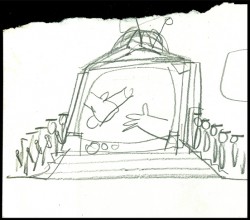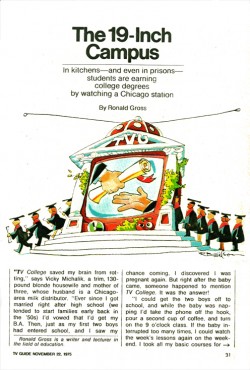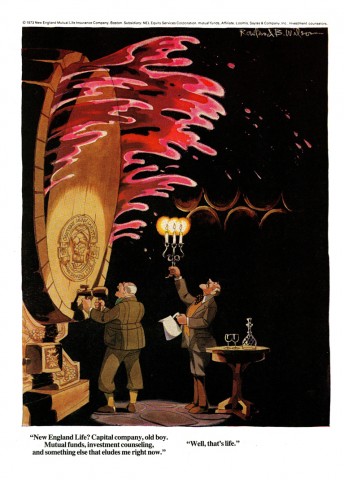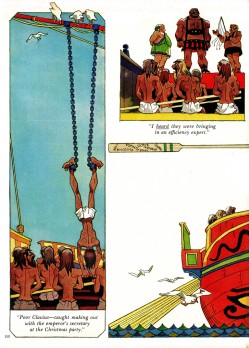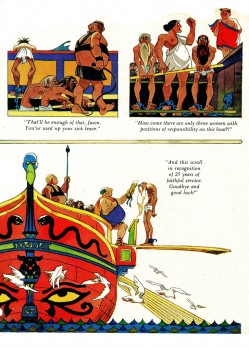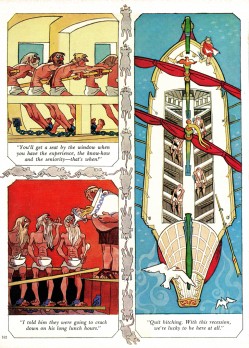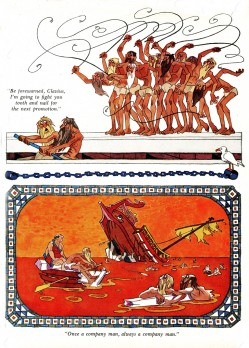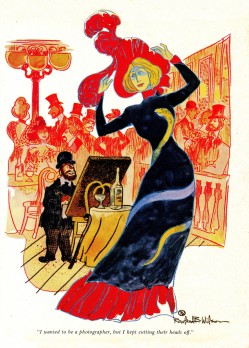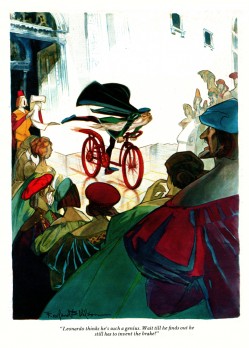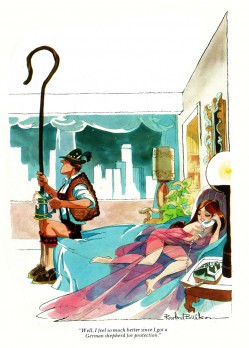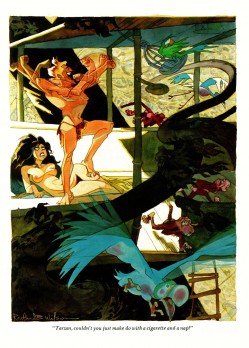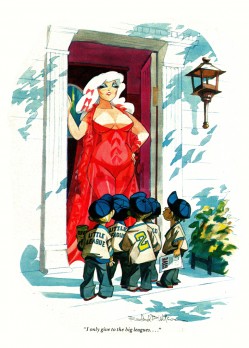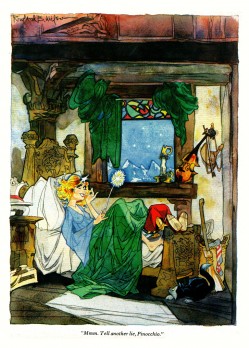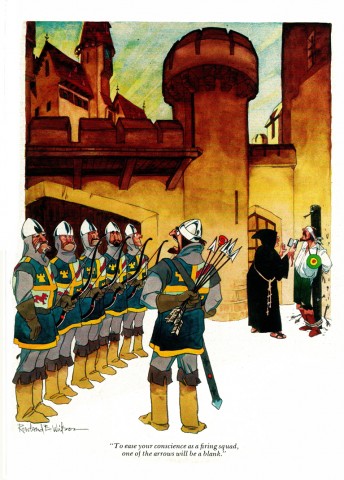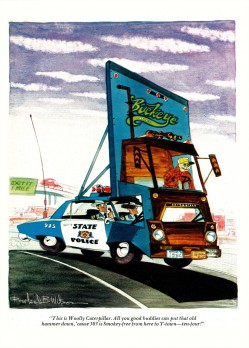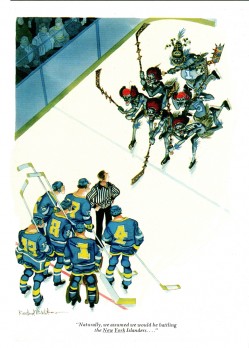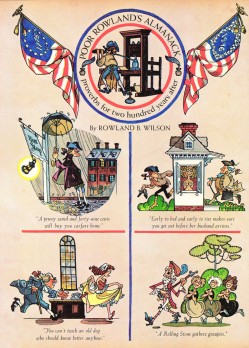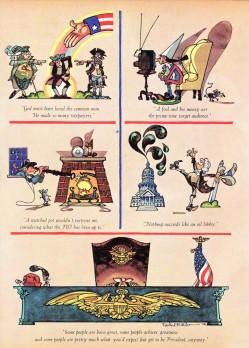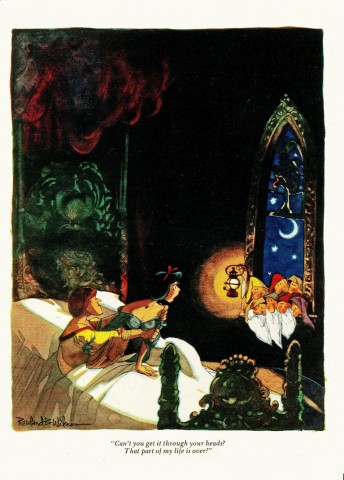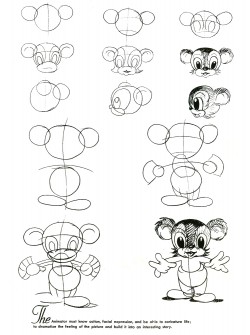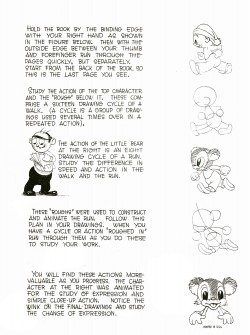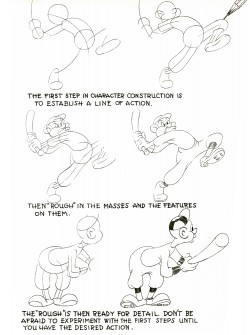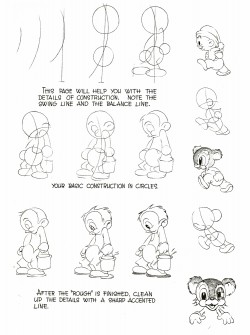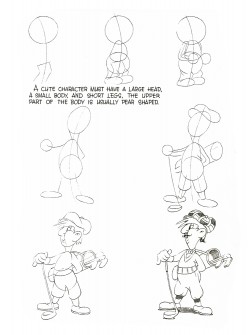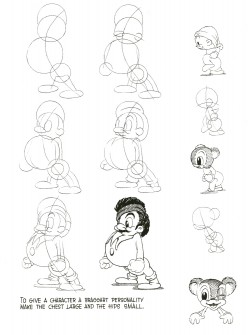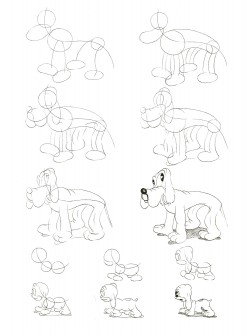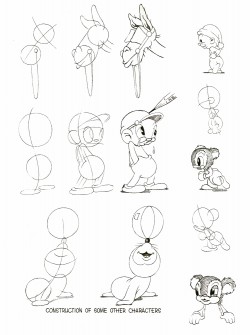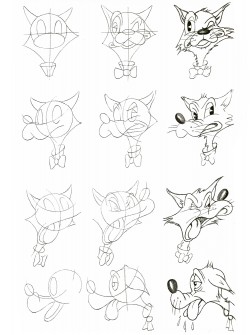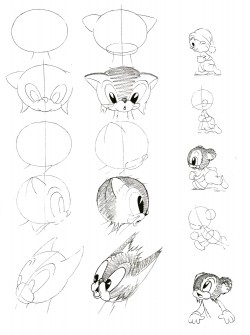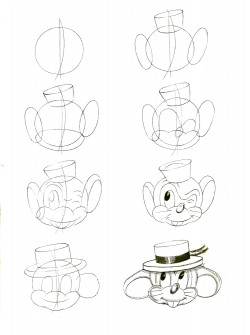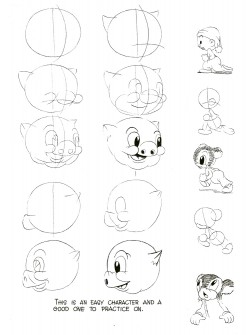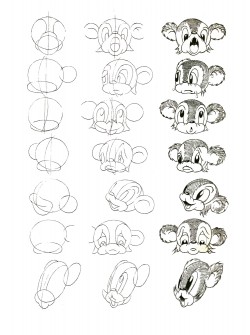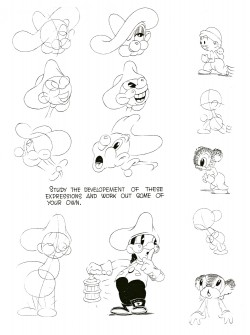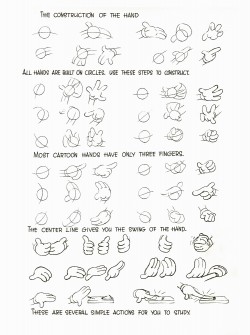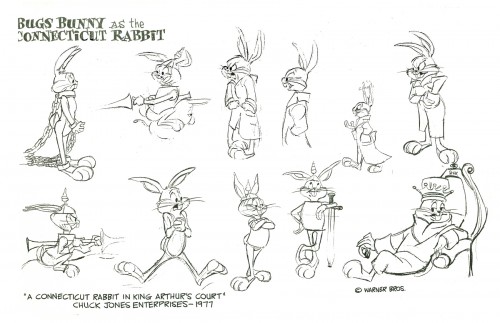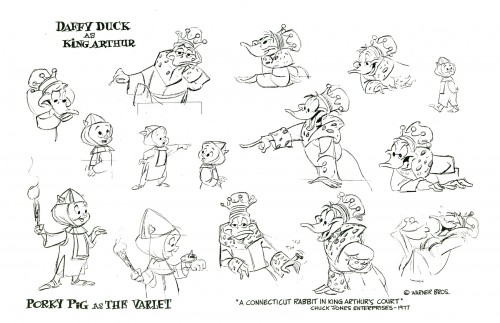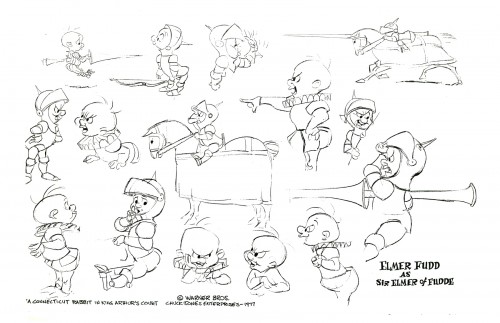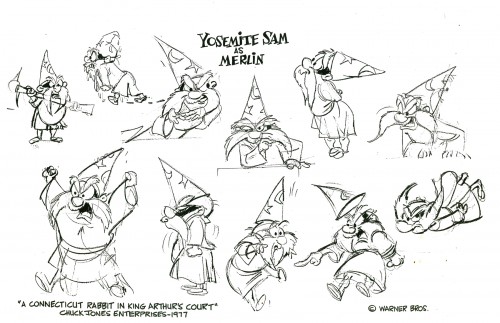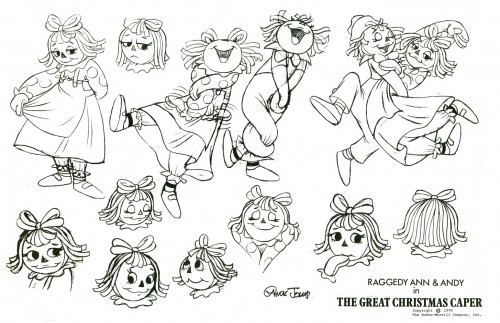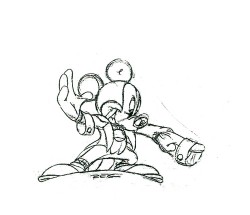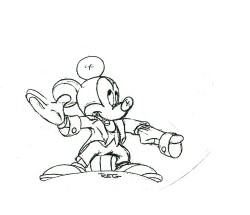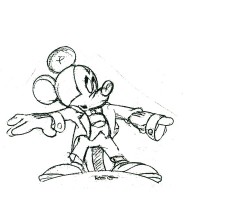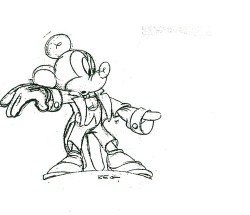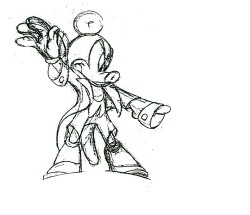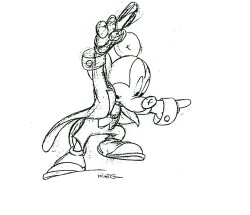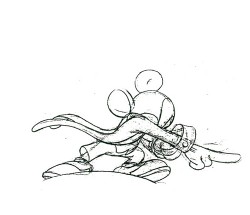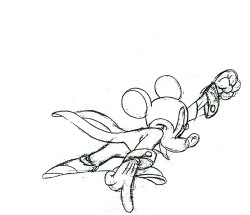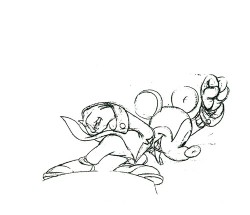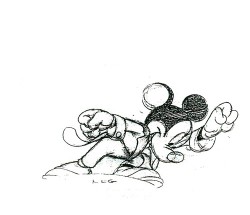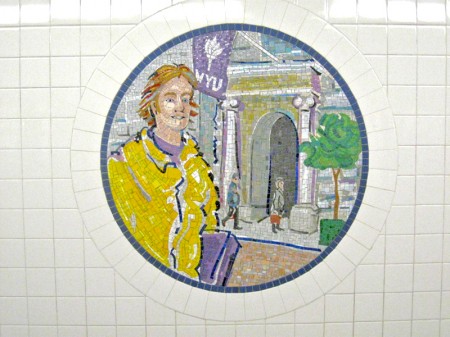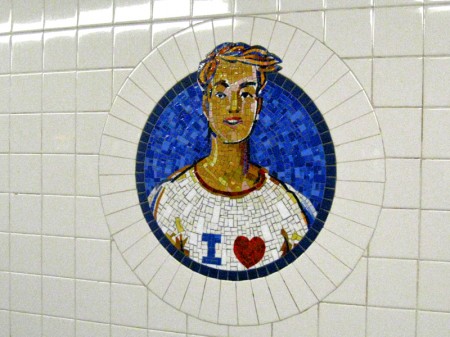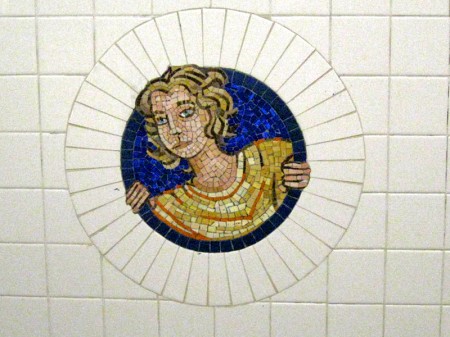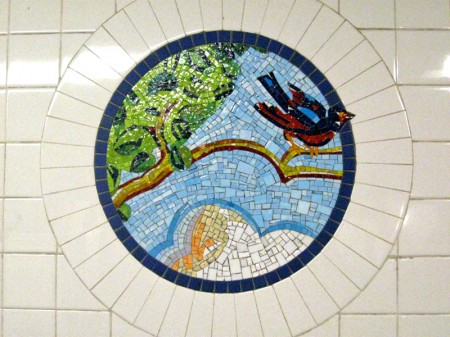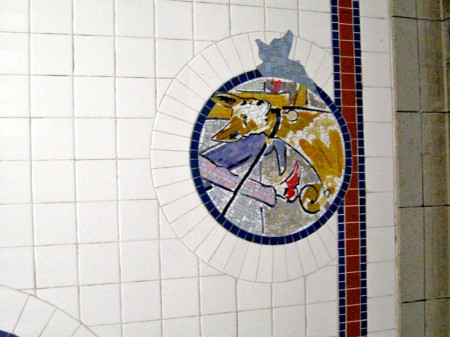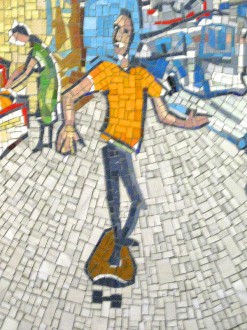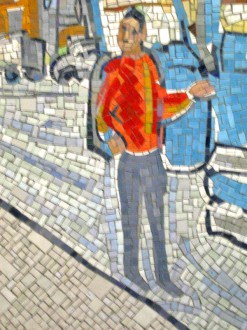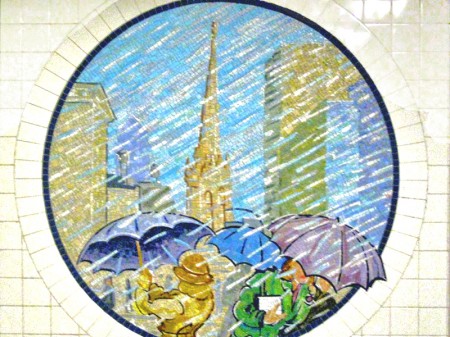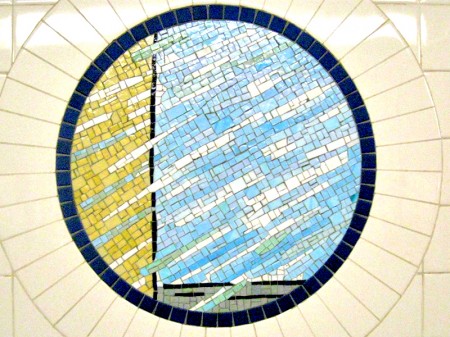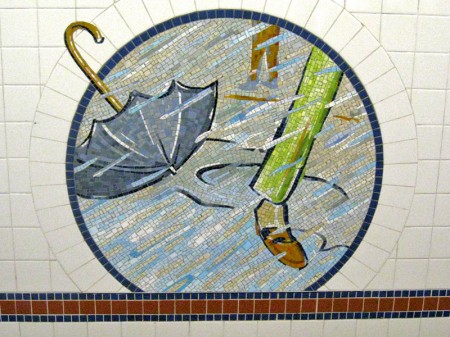Monthly ArchiveJanuary 2010
Photos 31 Jan 2010 09:11 am
Photoshow
Independent Animation 30 Jan 2010 09:32 am
It’s Still Me
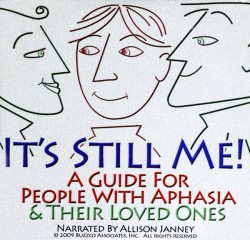 -Candy Kugel‘s made a short film to honor the memory of her late mother who developed severe Aphasia after having a stroke. The film was done in conjunction with the National Aphasia Association.
-Candy Kugel‘s made a short film to honor the memory of her late mother who developed severe Aphasia after having a stroke. The film was done in conjunction with the National Aphasia Association.
Allison Janney narrated the film.
Recently, having to self-promote her own film, support for the film came her way from a couple of celebrities, Michael Douglas and Lee Woodruff, the wife of journalist Bob Woodruff. I thought it worth showcasing these comments given Candy.
Here’s the tribute given by the actor, Michael Douglas.
-
After my father, Kirk Douglas, had a stroke, I learned how truly frustrating it is to try to communicate with a loved one without words. My dad was still my dad, he just could not express himself, initially after the stroke, the way he had communicated so eloquently
his whole life. And we, his family, were frustrated by the struggle to understand him.
The DVD, “It’s Still Me”, would have been a welcome tool to help us incorporate novel and effective strategies to improve communication with each other. Luckily, my father can speak again, but many people with aphasia are not so lucky.
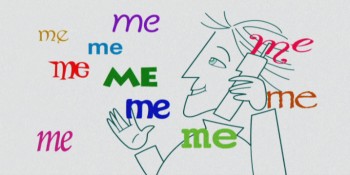 This was true of my neighbor, Adelaide (Chig) Kugel, who was the inspiration for “It’s Still Me”. Chig was a wonderful and sophisticated lady who developed severe aphasia after a stroke. Never able to speak fluently again, this former professional dancer learned to express herself beautifully without words while maintaining relationships with her family and friends.
This was true of my neighbor, Adelaide (Chig) Kugel, who was the inspiration for “It’s Still Me”. Chig was a wonderful and sophisticated lady who developed severe aphasia after a stroke. Never able to speak fluently again, this former professional dancer learned to express herself beautifully without words while maintaining relationships with her family and friends.
Chig’s daughter Candy created “It’s Still Me” in partnership with the National Aphasia Association in memory of her mother in order to share with others the lessons they earned to communicate with each other and to maintain their loving bond. I highly recommend “It’s Still Me” for families facing communication challenges brought on by stroke, aphasia and related conditions.
And this is the tribute by Lee Woodruff, wife of television journalist Bob Woodruff
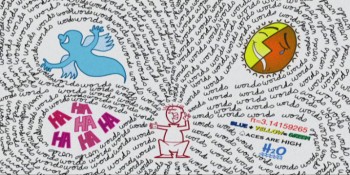 Candy Kugel and the National Aphasia Association have done a masterful job on their DVD “It’s Still Meâ€, which gives people with aphasia and their families effective ways to communicate when words are not available. It is very well done, simple and has lots of useful information. I wish I had a resource like this when Bob was recovering from his traumatic brain injury and dealing with aphasia.
Candy Kugel and the National Aphasia Association have done a masterful job on their DVD “It’s Still Meâ€, which gives people with aphasia and their families effective ways to communicate when words are not available. It is very well done, simple and has lots of useful information. I wish I had a resource like this when Bob was recovering from his traumatic brain injury and dealing with aphasia.
While I was reviewing the DVD, Bob passed by and became transfixed by the images and messages of “It’s Still Me.†The DVD’s information and style is powerful on many levels, especially when emphasizing the fact that the intellect, personality and heart of your loved one is still there, even without words. My family and I know this firsthand.
More information about the dvd can be found here.
The dvd can be purchased here.
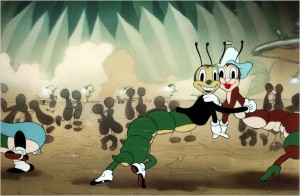 - Tomorrow, Sunday, at Lincoln Center there will be a program of Dance in Animation (particularly Disney). Mindy Aloff will talk about the cartoons and will sign copies of her new book, Hippos in Tutus.
- Tomorrow, Sunday, at Lincoln Center there will be a program of Dance in Animation (particularly Disney). Mindy Aloff will talk about the cartoons and will sign copies of her new book, Hippos in Tutus.
Along with about 40 mins. of Disney animation there will be some newer Independent films that also focus on dance:
En Tus Brazos by Edouard Jouret, Matthieu Landour, and Fx Goby, France, 2006; 4m
Trash Dance by Oliver Fergusson-Taylor, UK, 2008; 1M
Entanglement Theory by Richard James Allen, Australia, 2009; 9m
She by Kathy Rose, USA, 2009; 4m
Romeo & Juliet Before Parting by Jay Field, Canada, 2009; 5m
Gabrielle by Stephanie Weber Biron, Canada, 2009; 4m.
Introduced by the director.
Today’s NYTimes has a feature article on this program.
Bill Peckmann &Comic Art &Illustration &Rowland B. Wilson 29 Jan 2010 09:20 am
More Rowland B. Wilson
- Here, courtesy of Bill Peckmann, and his great collection of work, are more of Rowland B. Wilson‘s great cartoons for various sources.
for TV Guide:
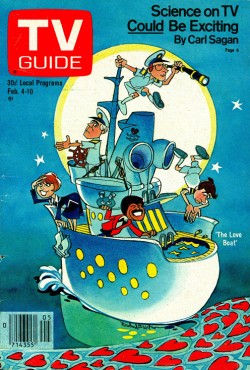
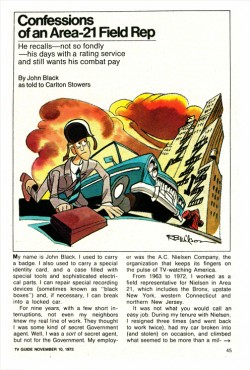
A cover and a spot ad.
A couple of ads he illustrated:
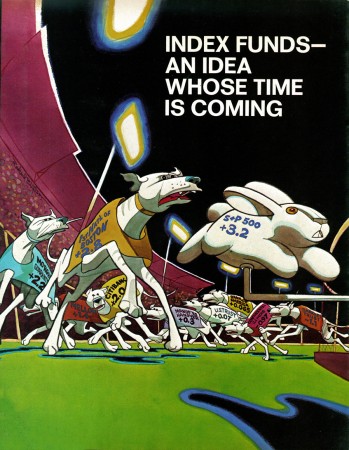
(Click any image to enlarge.)
And of course more playboy cartoons:
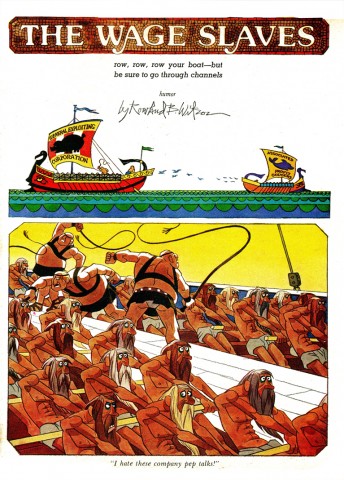 1
1This is a multipage piece he did.
Bill Peckmann sent these additional comments
after seeing these images on the site:
Here are some personal notes/sidebars if you’re interested:
TV Guide –
I believe the cover was the only one RBW ever did for TV Guide. He did do tons of editorial art for them.
Editorial art for “Confessions” was done at same time he was working on “Lucky Seven Sampson.
The rough sketch is mine, that was one of the great perks of sharing studio space with Row.
Greyhound editorial art was done for one of the business mags in the ’70′s, at the same time he was working on “Poor Rowland’s Almanac”.
New England Life art was done when Rowland was working at R. Williams’ Studio, visiting him on vacation, I was lucky enough to hand carry it back to the States for delivery, man, it was not easy to let it go and give it to the ad agency.
Playboy – #6. That’s Suzanne (Rowland’s wife) as the lady and RBW is the bearded gent on the right in the audience. Also done in London.
#10, The lady was inspired by Mae West.
#14, At the time, the NY Islanders wanted the original art as a gift, gratis, to hang in their offices, Rowland told them where to go with that.
#17, Rowland & Suzanne gave us the original as a wedding gift 10 years ago, of course it’s one of our prized possessions and I have tell to you that the printed version just does not do the original justice, too bad it’s so hard to get out of the frame otherwise I’d let you post it.
Books 28 Jan 2010 09:34 am
WTFoster’s other book – 1
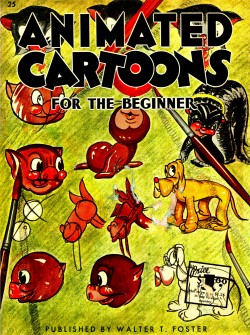 - We all know that Walter T. Foster art books published the grandaddy of modern How-To-Animate books, Preston Blair‘s Animation. But there was another book from the same publisher, and I don’t know, to this day, who put it together. I think it might have been Walter T. Foster, himself.
- We all know that Walter T. Foster art books published the grandaddy of modern How-To-Animate books, Preston Blair‘s Animation. But there was another book from the same publisher, and I don’t know, to this day, who put it together. I think it might have been Walter T. Foster, himself.
Animated Cartoons for the Beginner.
When I was young – 10 or 11, somewhere in there – a guy who lived in my building, Norman (I don’t remember his last name), worked for NY’s largest art store at the time, Art Brown. My father broached him and told him of my obsession for animation and asked if the guy, who was an “artist,” could help me. Norman came down to my apartment and spent a lot of time talking with me and encouraging me. He gave me a copy of both Walter T. Foster books on animation, and he won a fan forever. He soon moved out of the building but was replaced by a woman, who I guess took over his apartment, Norma
(I don’t know her last name either.)
She brought some colored pencils, watercolors and a 5×7″ drawing pad with rough surface. She wanted me to draw/paint a story. I filled that book with illustrations of a Russian fairy tale called “The Prince and the Dragon.” I liked the dragon part. As I did it, she spent time guiding me in using the materials.
There’s nothing good or notworthy in that pad (which I still have), but it put me on a path after spending so much time whining about wanting to be an animator. The kindness of strangers.
Anyway, that other book, Walter T. Foster’s Animated Cartoons for the Beginner, was always a poor and distant cousin to the Blair book. Even when I was 12, I looked down on it. I mean who draws like that? Except Nat Falk and Walter T. Foster. When I pulled the book out to show my guys in the studio, Matt Clinton‘s first comment was, “Who draws like that anymore?”
I guess they used to draw like this. Connie Rasinski and the folks up at Terrytoons perfected it, and copyists like Walter T. Foster turned it into something else.
But looking at the book today, it sure is something. It always irked me that the drawings on the right hand side (the even numbers, below) included walk cycles and movement that could be flipped. But the pages of the book weren’t correctly assembled, so the animation doesn’t flip without some big problems. It’s crazy.
Next week, I’ll post the other half of the book and try to make some QT movie flipbooks of the pages – those I’ll have to put into proper flipping order.
Animation Artifacts &Bill Peckmann &Chuck Jones &Models 27 Jan 2010 09:47 am
Assorted Models
- As I’ve said in the past, I just love model sheets. And here are a stash of them on loan from Bill Peckmann‘s collection. Some good, some not-so-good, and some great.
Let’s start off with something great.
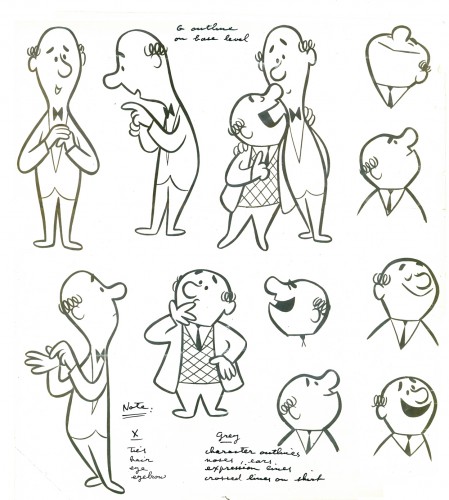
Bert and Harry Piels in a photostat
from the UPA studio.
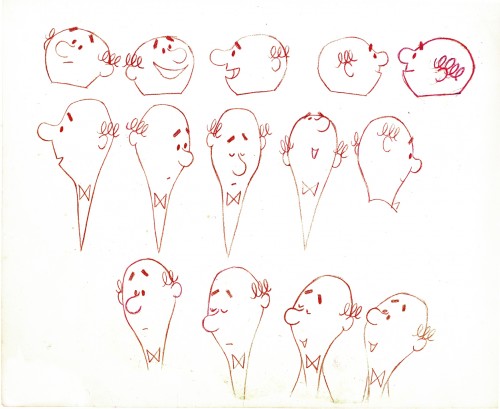
Here’s a head model for the Piels brothers
drawn in red colerase on animation bond.
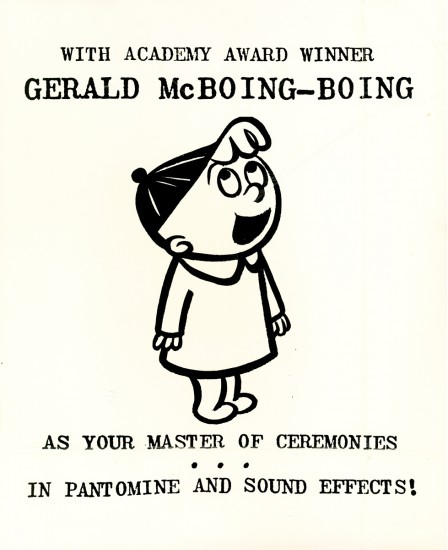
Here’s a B&W fading photostat of an announcement
for the Gerald McBoing Boing Show direct from UPA.
The following are some models from Chuck Jones’ not-so-good tv film
A Connecticut Rabbit in King Arthur’s Court.
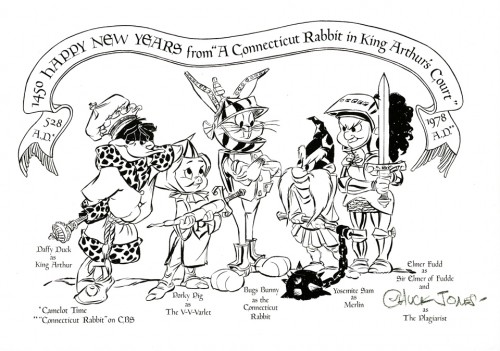
Here’s a HAPPY NEW YEAR card from 1978.
Finally the bottom of the barrel of a couple of models
from Chuck Jones’ RAGGEDY ANN & ANDY in
The Great Christmas Caper.
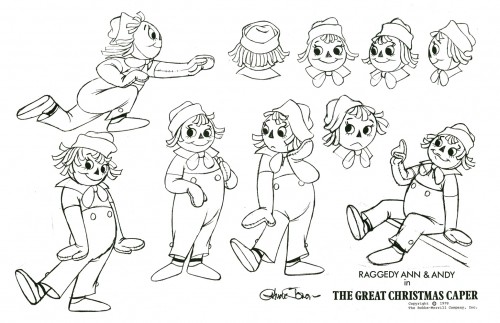
The characters never looked worse.
In his later years, Chuck reworked the WB characters into something
godawful, and here he takes Raggedy Ann and Andy way over that
cute/corny/ugly line. Too bad he didn’t pull Corny Cole into it.
Art Art &Commentary 26 Jan 2010 09:00 am
Embarrassment among the Riches
My most embarrassing moment
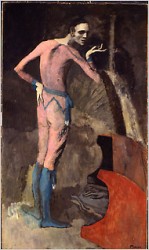 - There was a news story that was in all the papers yesterday. A woman visiting the Metropolitan Museum of Art, with a study group, accidentally tripped and slammed into a Picasso painting tearing a hole in the lower right hand corner of the painting. They’ve determined that it can be repaired without too much pain, and it will most likely not be noticeable.
- There was a news story that was in all the papers yesterday. A woman visiting the Metropolitan Museum of Art, with a study group, accidentally tripped and slammed into a Picasso painting tearing a hole in the lower right hand corner of the painting. They’ve determined that it can be repaired without too much pain, and it will most likely not be noticeable.
I’m sure that woman has gone through a small bit of hell since Friday. Lucky her, she’ll always be reminded of the incident every time she visits the Met. I know this because a similar thing happened to me many years ago.
I was a freshman in college. The teacher took the class, about 20 students to the Met to look at a small group of paintings. Like most dumb freshman, I was laughing and joking with friends on the periphery of the group, ignoring the teacher.
She had gathered the class in a corner around a small Rembrandt. I realized that it was time to stop fooling around and get in there to hear what the teacher was telling the class. I saw an opening against the wall and thought I could maneuver my way to the front.
 Well, there was an opening because there was a small platform to keep visitors away from the painting. I didn’t see it and tripped.
Well, there was an opening because there was a small platform to keep visitors away from the painting. I didn’t see it and tripped.
I grabbed the first thing I could to prevent me from falling – the Rembrandt.
It was hanging by two wires, and I had a hand on each side of the painting winging back and forth. It prevented my fall, but it took a split second for me to realize what I was doing. Guards came running. The entire class, including the teacher, were aghast. I quickly let go. The painting continued to swing left to right and back again.
The Rembrandt to the (Right) wasn’t the painting I grabbed, but it looked not too different in my memory; it was a portrait. (I’ve completely blocked out the name of the actual painting.)
I didn’t rip anything but a hole in my brain that remains with me every time I go near the Met. So . . . I know what that poor woman felt, though her damage was quite a bit greater. She ripped a Picasso canvas; I just tested the wires that hung the Rembrandt. Luckily for me, they held up.
Animation &Animation Artifacts &Bill Peckmann &Disney &Models 25 Jan 2010 08:32 am
The Symphony Hour – scene 22
- Last week I posted the model sheet for scene 10 of The Symphony Hour. This week I have scene 22. I’ve also broken down the drawings and made a QT comparison between the final film and these extremes by Les Clark. It’s a short scene, but there’re a lot of dynamics in it.
The model sheets come from the gracious courtesy of Bill Peckmann. Many thanks to him.
As with last week’s post, first the full model sheet then a breakdown.
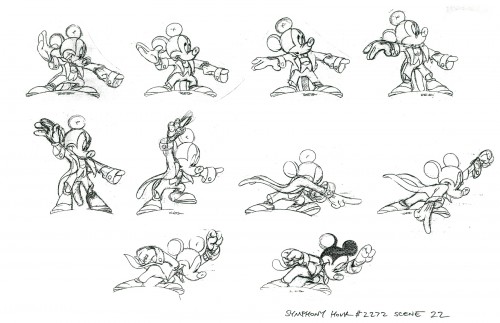
(Click any image to enlarge.)
The QT shows that the first images of the scene have change
a bit. Mickey’s right hand is different. It changed to something
more dynamic. The scene feels as though it cuts short, except
that it’s matching the track and works with sound. Since the
sound comes in with the head of the next scene, I left it out and
held the last drawing a beat longer than called for. Click left side of the black bar to play.
Right side to watch single frame.
For further study take a look at Mark Mayerson‘s Mosaic and comments on this film.
Photos &repeated posts 24 Jan 2010 09:16 am
8th Street Tiles – recap
- Given the crazy weather lately, this post seems appropriate for repeating just now.
- The other day, to escape the rain, I found myself in the 8th Street subway station heading downtown. It was a BMT station which features a number of artist images done in tiles. Called Broadway Diary some 40 mosaics are featured on this subway platform’s walls. The art was created by Tim Snell who specializes in mosaics and murals.
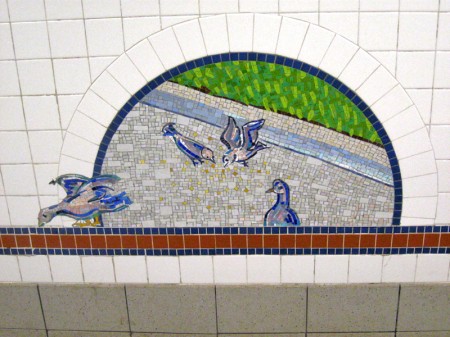
(Click any image to enlarge.)

A number of themes appear in the grouped images. NYU is part of the
neighborhood, so it’s prominantly featured in many of the pictures.
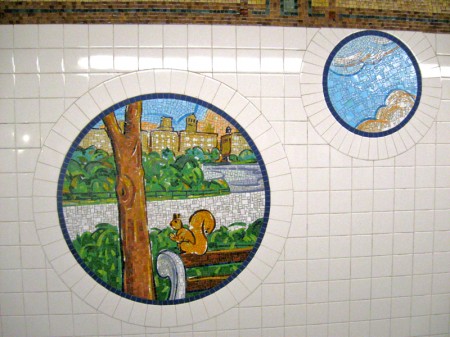
A lot of the animal life of the area also appears prominently.
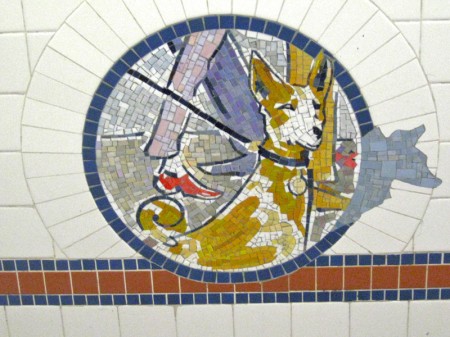
Some of the animals appear on a leash.
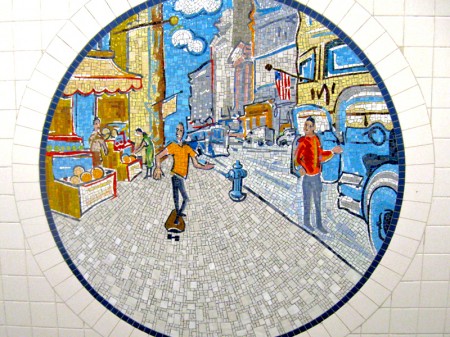
The busy shopping area of 8th Street is prominent.
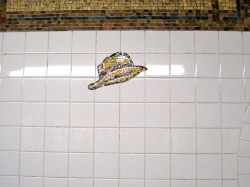
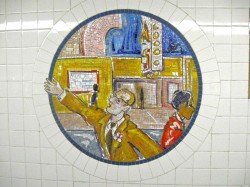
The free flying hat makes me think of the 23rd St. station
and its murals by Keith Godard of free flying hats.
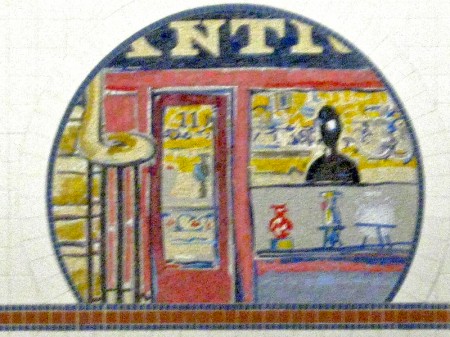
Many of the local shops are also featured.
This one was on the other side of the station.
It’s a delight to be able to see this work while waiting for a train. (I was able to snap all these pictures before the next train arrived.) It’s a bit like the 20th century’s answer to WPA art. (These were all done before 2000.)
Let’s hope Obama initiates art projects to keep some artists alive while giving us some positive artwork.
Articles on Animation &Hubley 23 Jan 2010 09:05 am
Up from Bugs
- It was definitely a more innocent time back then.
I found this article in the Aug. 5, 1961 issue of the New Yorker,
the Talk of the Town section:
The film officer of the United Nations Children’s Fund is a buoyant lady named Susan Burnett. Miss Burnett has given a little party at the U.N. to honor Mark and Hampy Hubley, the two very young narrators – Mark is eight and Hampy (short for Hampton) is four – of “Children of the Sun” an animated cartoon produced for UNICEF by the narrstors’ parents, John and Faith Hubley. We were among those present at the party, along with the Hubleys; absent, for reasons ranging from professional engagements elsewhere to afternoon naps, were several other contributors to the film’s sound track, including the narrators’ sister Emily, who is two; their sister Georgia, not yet one; the Budapest String Quartet; the violist Walter Trampler; and Pablo Casals.
The party began with a showing of the cartoon in the small basement screening room of the Secretariat Building. A charming sketch of important events in the life of a young child – spearing peas on a plate, climbing trees, daydreaming at the shore – it end with a quiet, harrowing comment to the effect that this happy child is fr from being typical of most of the children on earth, three-quarters of whom ar suffering from some degree of hunger. Except for a few concluding words recited in English by Mark Hubley (“For the first time in history, nations are united to rid the world of hunger . . . . The United Nations, through UNICEF, is dedicated to the children of the sun. The future of the earth depends on them.”), the sound track requires no dubbing for use in other countries, since the language it peas is either musical – excerpts from Bach’s Cello Suite No. 5, Haydn’s “Sunrise” Quartet, and Mozart’s Quintet in E Flat – or extraverbal, being the crowings and gurglings of various Hubleys, ingeniously synchronized with the action of the cartoon. Hampy identified the family sounds for us. “That’s Georgia,” he said during a bottle-feeding scene, and, during the pea-spearing one, “That’s Emily. She made those noises when we gav her a puzzle to play with.” The sounds of horseplay accompanying the seaside episode were made by Hampy, himself. “Me imitating a orchestra,” he said with pride. “I can do all the instruments, one at a time.”
When the movie was over, the party adjourned to the Delegates’ South Lounge, where refreshments appropriate to the assorted ages of the guests were served. Miss Burnett proposed a toast to the Hubleys, adding, for our benefit, that UNICEF is happier about “Children of the Sun” than about any other film it has put our. Miss Brunett discovered the Hubleys through their cartoon short “Moonbird,” which won an Academy Award two years ago. When she approached them, the were busy preparing their first feature-length cartoon – an adaptation of Harlow Shapley’s book “Of Stars and Men.” “What Miss Burnett told us about children starving all around the world was so shocking that we had to accept her assignment, which was to state the simple fact that children are hungry and to state it in such a way that it would be instantly comprehensible in any language or culture of locality or political circumstances,” Mr. Hubley said. “To keep matters both interesting and universal in a film is quite a job. Bug cartoons, which are what I started my career in, are easy, because a bug is so specific. Only a Paul Klee could make a bug that was interesting, generalized, and yet true to nature.”
Mr. Hubley a native of Wisconsin, was once an art director for Walt Disney, drawing not only bugs but such advanced cartoon images as the “Rite of Spring” sequence in “Fantasia.” After the war, in which he helped to make training films for the Army Air Forces, he had a hand in the famous UPA cartoon films, starring the Messrs. Magoo and McBoing-Boing. Five years ago, the Hubleys left Hollywood for New York and formed their own company here under the name of Storyboard, Inc. “We buy the groceries by making a few TV-commercial cartoons every year,” Hubley said. “The rest of the the time, we like to work on our own things, taking the attitude a painter would – making films that are a part of us and express something of us. A film is apt to cost us around twenty-five thousand dollars and, with luck, will pay for itself in ten years’ time.”
Sorry, I don’t have a copy of this film, and there are no stills of it on line so this goes without illustration.
Chuck Jones &Commentary &Daily post 22 Jan 2010 08:55 am
Snippets
- The BAFTA Award nominations were revealed yesterday. The nominees for
Best Short Animated Film are:
THE GRUFFALO Michael Rose, Martin Pope, Jakob Schuh, Max Lang
a half hour tv special for BBC1. It features the voices of Helena Bonham Carter, John Hurt and Tom Wilkinson. More info here.
THE HAPPY DUCKLING Gili Dolev – View a clip at their website here.
MOTHER OF MANY Sally Arthur, Emma Lazenby A 5 min short. Info here. View a clip here.
The nominees for
Best Animated Feature are:
Coraline
Fantastic Mr. Fox
UP
- Screen Daily magazine has an excellent encapsulation of Eric Rohmer’s life work and accomplishments.
Within the article I was reminded that Rohmer did a film, The Lady and the Duke, which made extensive use of cg work for a period piece. The film’s exteriors were shot on blue-screen backgrounds with 18th-century paintings superimposed during the editing process. I didn’t get to see this film (with a very limited release in the US) but Slant Magazine’s review states:
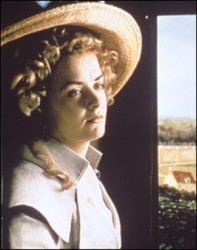 His exteriors recall Zbigniew Rybczynski’s famous Tango and forces the spectator to question that which is most visually important in the frame. Rohmer’s interiors are considerably less evocative though they’re the perfect setting for what plays out like 18th-century Jacobin pornography. The effect is disorienting, mildly humorous, and sometimes taut
His exteriors recall Zbigniew Rybczynski’s famous Tango and forces the spectator to question that which is most visually important in the frame. Rohmer’s interiors are considerably less evocative though they’re the perfect setting for what plays out like 18th-century Jacobin pornography. The effect is disorienting, mildly humorous, and sometimes tautAnd J.Hoberman in his Village Voice review wrote:
- The movie’s look is authentic, but—as suits an epoch that predates photography—in no way naturalistic. Commissioning a series of paintings based on period engravings, Rohmer has contrived a glorious Méliès effect: Once they leave their drawing rooms, his actors are keyed into these virtual locations as though they were moving through 18th-century panoramas and tableaux.
This will be my next Netflix selection, and I’ll undoubtedly post something about it after I see it. I remember being impressed back in 2006 when I’d read about it.
- As I, and probably you, learned this week from Cartoon Brew, Pat Smith and Bill Plympton are now collaborating on a new blog called Scribble Junkies.
Pat, on the site, writes of the blog’s purpose: This is where Bill and I will share our opinions, techniques, photos, drawings, and films.

I’m looking forward to seeing how this will vary from the sites each of them already hosts: Pat Smith Blend Films (Pat states that he is phasing out his personal blog for the new one) and Bill Plympton Plymptoons.
- The publicist, Yana Walton, sent me a link to a new animated piece done by Oxfam America to question the big bucks going into big oil. Oxfam turned to Talking Eyes Media to produce the piece which seems to be a sterling and masterful collage of AfterEffects moves.
I found it interesting enough to share. Their agenda is front and forward, but I have no complaint about that. Perhaps in the future they’ll go a step further and use real animation to get the message across more forcefully. Perusing the Talking Eyes site, I found myself curious about some of the documentaries they’ve made.
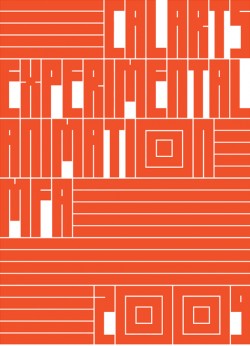
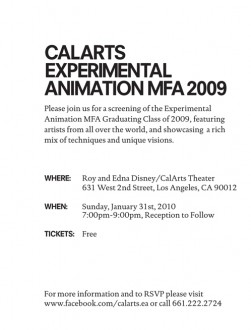
(Click any image to enlarge.)
_________________
- The Tempe Center for the Arts in Tempe, Arizona will host an exhibition celebrating the work of Chuck Jones. The show, called “Chuck
Amuck, a Legacy of Laughter,” will open February 26 with a free-to-the-public opening event. The show will run through June 18th. The opening night reception will be held from 7 to 9:30 PM in the TCA Gallery. It will be hosted by Jones’ grandson Craig Kausen and will include a screening of some of his cartoons. Seating is limited.
Their press release states:
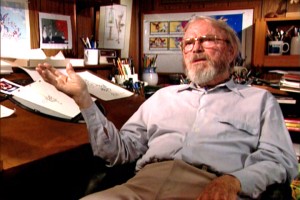 This exhibition of original sketches, paintings and animation production art highlights the life and art of legendary artist, animator and director Chuck Jones who not only helped bring to life famous cartoon characters such as Bugs Bunny and Daffy Duck, but also created the iconic Wile E. Coyote and Road Runner, along with many more. This exhibit will be the largest and most comprehensive exhibit of art by Jones since his retrospective held at the Capitol Children’s Museum, Washington, D.C. in 1988.
This exhibition of original sketches, paintings and animation production art highlights the life and art of legendary artist, animator and director Chuck Jones who not only helped bring to life famous cartoon characters such as Bugs Bunny and Daffy Duck, but also created the iconic Wile E. Coyote and Road Runner, along with many more. This exhibit will be the largest and most comprehensive exhibit of art by Jones since his retrospective held at the Capitol Children’s Museum, Washington, D.C. in 1988.The Tempe Center for the Arts is located at 700 W. Rio Salado Parkway, Tempe, Arizona. For more info go here.
By the way, if you’re at all a fan of Mr. Jones’ work you should be regularly visiting the blog established which has been posting many of the letters and illustrations Chuck sent to his daughter, Linda. There’s some spectacular material here.





